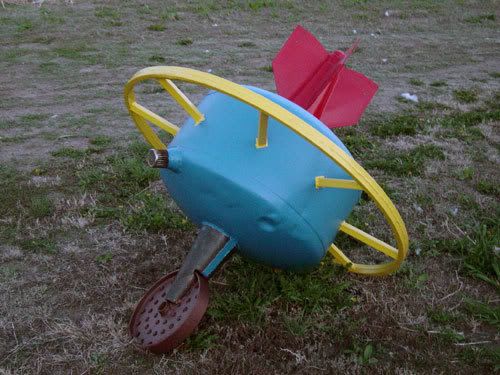 Boom-Go-Round, Remy Hanemann (At the Harleyville Project)
Boom-Go-Round, Remy Hanemann (At the Harleyville Project) This is a photograph from the Matthew Marks Gallery. (That's Nan Goldin's gallery representation in the U.S.)
This is a photograph from the Matthew Marks Gallery. (That's Nan Goldin's gallery representation in the U.S.)I had an opportunity to see an exhibit of photographs by Nan Goldin at the Chicago Institute of Art back in November. I didn't like them. I dismissed her work as cheap porn shot in "available light." Her work is cheap porn shot in "available light." Some critics are quick to point out that she used a slideshow exhibition because museums and galleries weren't really interested in photography back in the late seventies when she began to work, and she could exhibit a slideshow in indie film festivals. I think that's silly. I think she exhibited her work at little sticky-floored porn theaters. I didn't know anything about Nan Goldin back in November. I know a little bit more now.
She describes her work best: Every time I go through something scary, traumatic, I survive by taking pictures. You also help other people to survive. Memory about them does not disappear, because they are on your pictures. It is about keeping a record of the lives I lost, so they cannot be completely obliterated from memory. My work is mostly about memory. It is very important to me that everybody that I have been close to in my life I make photographs of them. Because these pictures are not about statistics, about showing people die, but it is all about individual lives. In the case of New York, most creative and freest souls in the city died. New York is not New York anymore. I've lost it and I miss it. They were dying because of AIDS.
It makes sense to me now. I get it. In that exhibit, I saw pictures of beaten women, dying men, people in the shower, people having sex. She even took pictures of herself having sex. In a sense, she made a record of her life in photographs. And then, she shared her life in whatever way she could. Perhaps, and this is where I could go off the existential rails, she thought she would cease to exist if she couldn't show her work somewhere. Anywhere. I still don't like Nan Goldin's work. Sorry.
This makes me wonder about what draws us to art in the first place. I consider the work of two artists I admire. One of them made beautiful sculptures in public places. He made iron reflect the sky and interact with the environment in which it was placed. I don't know him, though. I just know his work. And I like it. Another, makes art from iron scrap that looks like various weapons of mass destruction. He makes crazy little bombs and missiles and adds wheels and tires and propellers. What he ends up with are wonky little vehicles that look like toys (if toys could blow up and kill you.) I like his work. But, I also like him. So, is it possible that I like his work because I like him? Can the two be separated? I'm not sure. It might be that this is a conundrum even more readily applied to writers. Maybe.
You know who I don't like? Thomas Pynchon. I think he's having a big laugh at us. Somewhere, nobody seems to know where, Tomas Pynchon is sitting in a fancy living room drinking Courvoisier giggling at all the academics pretending to get his work. The joke is that there's really nothing to get. Sometimes, the emperor really is naked. But then again, I've never read an interview with Pynchon. I've never seen a picture of him. He's never given any explination of his work. So, I look at it in a vacuum and I hate it. But would I hate it if I really liked him? I don't know.
How much of who I am goes into what I do? Can something be just craft, or do we fingerprint things in an unavoidable way for better or for worse? Is art really art if you don't know the artist? (And wow, could I go off on the theology of that. )
No comments:
Post a Comment